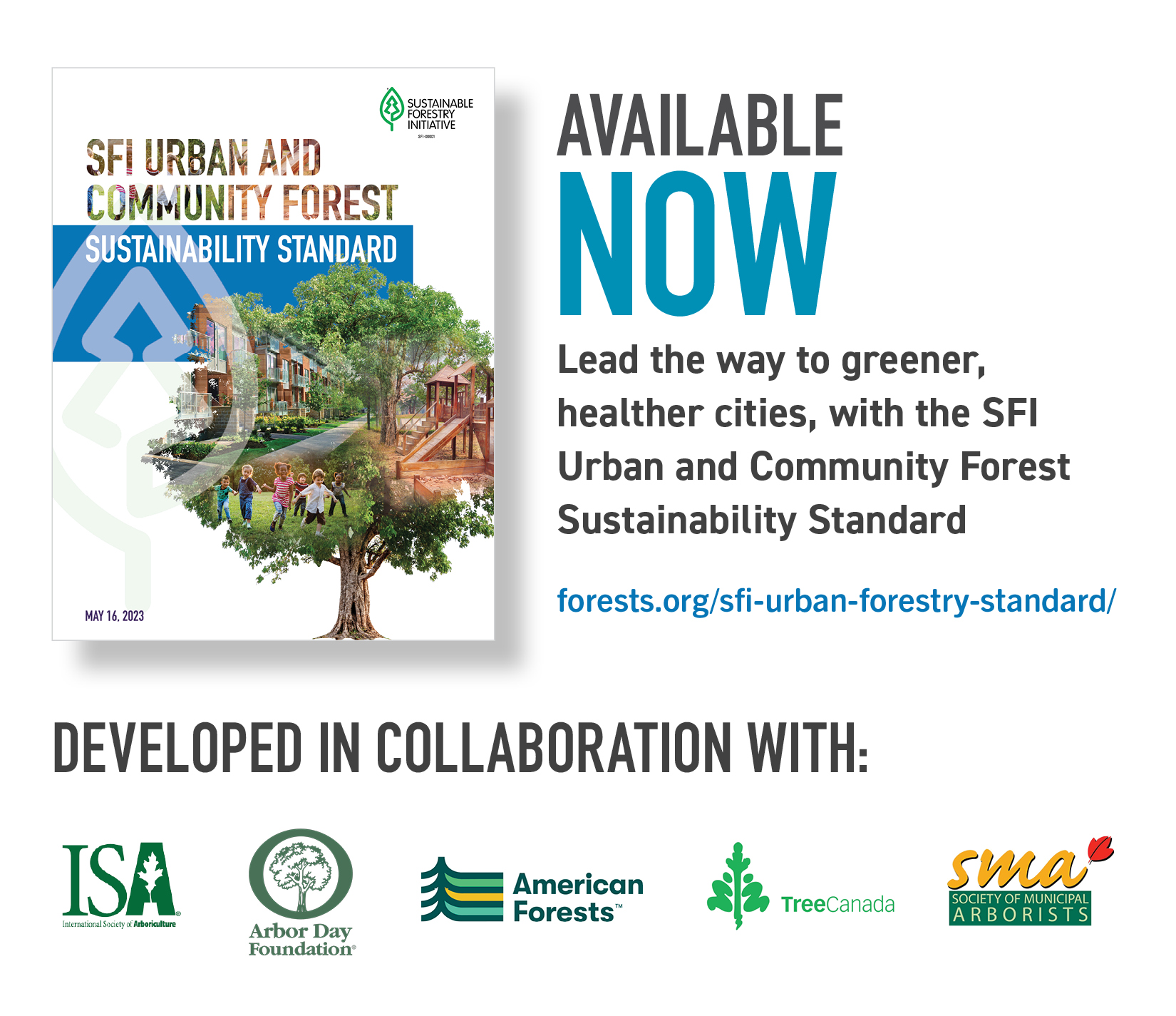By Annie Perkins, SFI Senior Director of Green Building and Supply Chain
In the ever-evolving landscape of corporate sustainability, the pursuit of greener and more eco-conscious buildings has undergone a remarkable transformation. Gone are the days when the focus was solely on operational energy efficiency, with most sustainability professionals acknowledging that a building’s environmental impact extends beyond its HVAC systems and insulation.
We now understand the critical importance of the materials used in construction and their associated embodied carbon emissions. Embodied carbon, or “Carbon emissions associated with materials and construction processes throughout the whole lifecycle of a building or infrastructure,” as defined by the World Green Building Council, include: material extraction, transport between sites, construction, repair, replacement, deconstruction, and disposal.
The U.S. Green Building Council (USGBC) has acknowledged the Sustainable Forestry Initiative (SFI) through the Legal Wood compliance path by attributing points to using SFI-certified wood in LEED projects. This recognition incentivizes the use of wood, particularly in the form of mass timber, for “environmentally, economically, and socially preferable life cycle impacts.” SFI-certified wood products provide assurances for risk reduction, landscape biodiversity, water conservation, and more.
Rebecca Price, State Advocacy Specialist for USGBC, highlights the pressing need to address embodied carbon, which often goes unaddressed in building policy, “Embodied carbon—the emissions generated from the manufacturing, transport, installation, maintenance, disassembly, and waste disposal of a building’s materials—is not always addressed in building policy. This is due to several factors: the sheer complexity of materials’ supply chains, technological barriers to decarbonization, and a lack of standardized data. Without significant action, though, embodied carbon is poised to increase in proportion to total emissions of the building sector.”
As a LEED-certified professional, I am constantly inspired by the growing popularity of these conversations in the decades I’ve seen the sector grow. Global emission rates underline the urgency of sourcing more sustainable building materials: nearly 40% of global carbon emissions stem from the building sector, with 28% attributed to operational emissions and 11% linked to materials and construction. It’s time we consider not just how our buildings function, but also the ecological footprint of the materials we use and the long-term management plans we have for surrounding sites.
For nearly three decades, the Sustainable Forestry Initiative (SFI) has helped consumers identify products sourced from sustainably managed forests through our certification standards. Earlier this year, SFI released a groundbreaking SFI Urban and Community Forest Sustainability Standard. Trees help people feel better while also helping mitigate climate change. And with over 80% of Americans and Canadians living in urban areas, the need for heathy urban forests and their many climate and community health benefits is more important than ever.
This year, Greenbuild and Industrial Wood-Based Construction (IWBC) Conferences will converge in Washington, DC, providing an ideal platform to engage in a dialogue about the benefits of wood products in construction and sustainable site management. Among the exciting news to be shared is SFI’s latest standard.
The SFI Urban and Community Forest Sustainability Standard is designed to promote sustainable urban and community forests through 16 comprehensive objectives. Its applications extend to commercial, residential, and municipal sites with trees, making it a versatile tool for enhancing sustainability. By harnessing the power of trees and forests as natural solutions, this standard contributes to site resiliency, sustainability, and improved community health. The impact of trees and green spaces on communities cannot be overstated, with documented benefits including improved health outcomes, reduced crime rates, lower temperatures, and increased economic opportunities.
For organizations that wish to build up to full certification or don’t wish to pursue full certification, the standard also offers the option to pursue four smaller thematic certifications:
- Community Well-Being and Human Health
- Environmental and Conservation Leadership
- Climate and Disaster Resilience
- Urban Forest Improvement
The standard is not limited to a specific sector; it invites governmental organizations, non-governmental organizations, Indigenous Peoples, community groups, healthcare and educational institutions, corporate entities, and more to seek certification. Early adopters have included corporate campuses, urban centers, and foundation headquarters, underscoring its broad applicability and potential for widespread positive change.
As green building and corporate sustainability professionals, you have the power to drive change by incorporating SFI-certified wood into your projects. By choosing sustainably managed mass timber and other wood products, you contribute to lowering embodied carbon rates, and also support USGBC’s journey towards more resilient and just communities. It’s a win-win scenario that combines sustainability with community interests and business success.
And if you’re attending this year’s Greenbuild, don’t miss the Women in Green Luncheon on Thursday, September 28th, 2023. The theme, “self-titled,” focuses on empowering women to take control of their narratives and break free from gendered limitations in the sustainability field. SFI is proud to sponsor this event, and I am excited to share my “self-titled” journey as a sustainability professional in the built environment – one that started over two decades ago!
To learn more about how SFI-certified wood offers better building solutions, visit forests.org/better-building-solutions.


